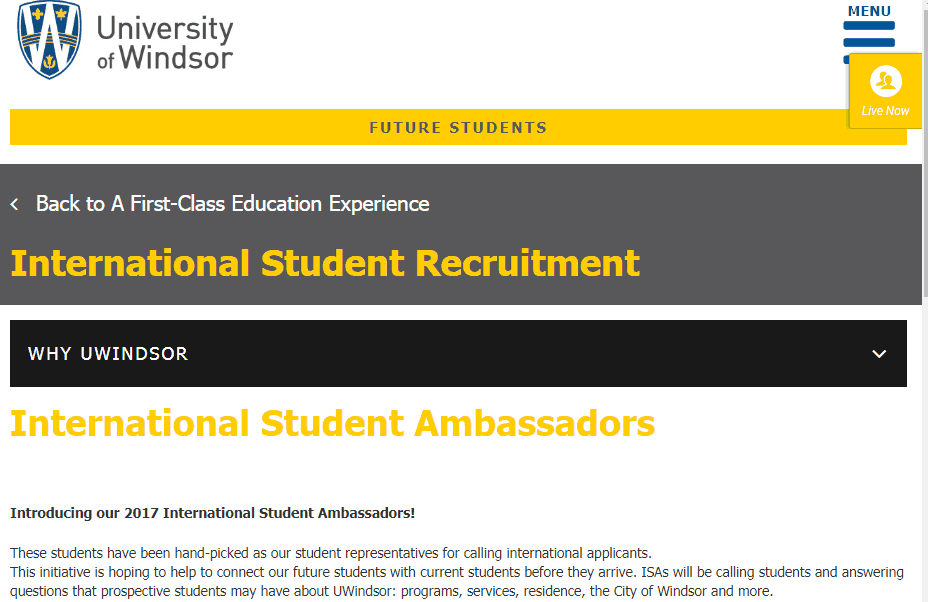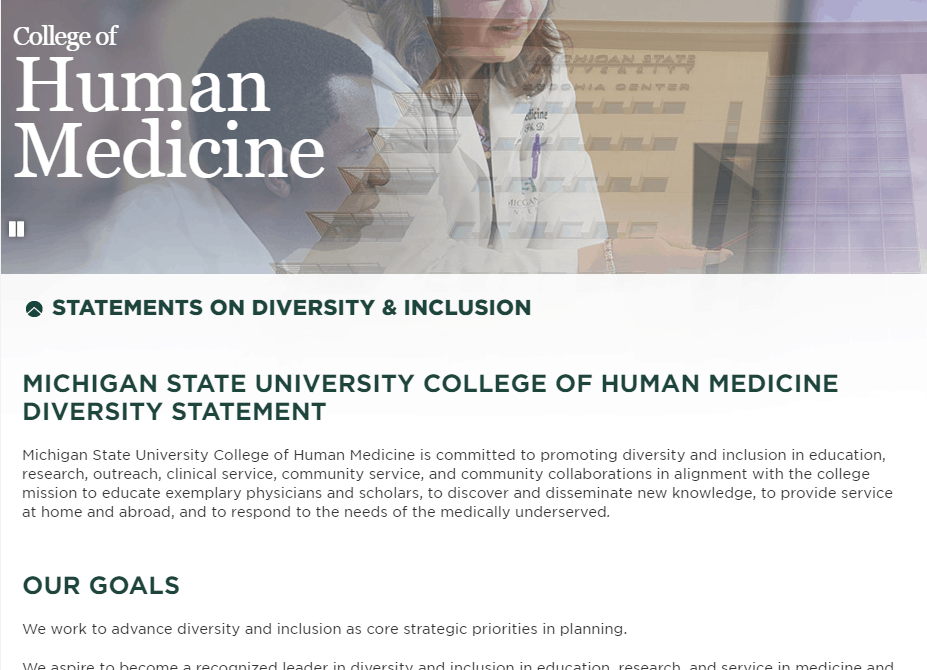
Pursuing education is different than most other transactions an individual will engage in throughout their life. It is not only a substantial investment of money, but of time and effort as well. It’s an investment intended to improve future livelihood and life satisfaction, and for those students who elect to study far from home, it’s one that can come with added challenges.
Students coming from abroad often do not have the opportunity to visit your school, see your facilities and location for themselves, or meet face-to-face with faculty and admissions staff before deciding to apply. This can make it very difficult for them to judge whether it is the right place for them, and to be confident that they are making a sound investment in their future.
So how best can you establish real trust with international students from afar, and convince them that your institution will provide everything it promises? Here are a few approaches that can be useful.
Make Use of International Student Testimonials – And Put a Face to the Name
Student testimonials are a valuable but often underused tool for recruitment. To take just one market as an example, Ruffalo Noel Levitz’s 2016 E-Recruiting Practices Report found only about 54.4 percent of four-year private institutions in the US make student testimonials available to prospective applicants browsing their website. The numbers for four-year public institutions and two-year public institutions are even lower, with just 34.7 and 31.8 percent of schools offering them, respectively.
This is a missed opportunity. Student testimonials are a great way to share enthusiastic reports about the quality of education and experience on offer at your school. Because they are delivered by individuals who are not your employees, they carry a valuable air of authenticity. A student might be more inclined to believe rave reviews of professors, campus facilities, and course material when it is delivered by someone who had once been in their position.
When recruiting international students online, the power of the testimonial can be even greater. Mastering the learning curves inherent in traveling to a new country, orienting themselves to a new culture, and studying in a language other than their native tongue are all significant concerns for many prospective applicants. Testimonials from others, particularly those from their own country, about the warm reception, special services, and other forms of help that a college offers can be the perfect delivery mechanism for the assurances they may be looking for.
Example
The International Students section of Douglas College’s website includes a page devoted entirely to student testimonials. The page offers a mix of perspectives highlighting academic, career, and cultural benefits enjoyed by international students at the College.

Many channels can work well for sharing student testimonials. In addition to dedicated testimonial web pages, social networks like Instagram can be great for sharing individual testimonials highlighting what a student loves about your college.
Example
The University of Chicago Admissions page on Instagram regularly features testimonials from international students, like this one from a 3rd year student from Armenia. Note how her testimonial highlights how at home she feels at UChicago, even mentioning the Armenian community in the city.

Other possibilities include creating short video testimonials on platforms like YouTube, and repurposing testimonials for blog content – perhaps for a post along the lines of “What International Students Love Most About Our School.” Whichever channels you choose, try to include an image of the student giving the testimonial alongside their words. Having a face to associate with a testimonial helps make it seem that much more personal.
Create or Promote a Student Ambassador Program to Enhance Follow-up
When it comes to proper handling of student inquiries, having a sound follow-up procedure in place is important. It can help you engage with prospects in a timely way and communicate some of the value your institution has to offer. One way to do a standout job of following up with international prospects is to maintain a team of international student ambassadors who will do some follow-up work for you.
International student ambassadors should be students at your school who are enthusiastic about the institution and eager to help newcomers with any questions or concerns they might have. Think of them as both live deliverers of testimonials and resources to whom prospects can refer for any questions they might have. They can also speak to prospective international students in their native language, which is a definite plus.
Ambassadors should be familiar with general information prospective students need to know, such as details about programs and housing. It will also be useful for them to be able to speak to some of the specific concerns of international students regarding quality of education, future employment opportunities, and personal & cultural exploration.
For the best possible experience, the ambassador should have a friendly, sincere manner on the phone, chat, or whatever other communication medium is being used. Initial contact should centre on asking questions to learn about the particular student – their specific wants, their specific concerns – and tailoring the conversation to them. This is one of the best ways to make a student feel heard and understood, and to increase the likelihood that they receive the personalized assistance that will lead to them trusting your school.
Don’t forget to have the ambassador leave their name and contact details, just in case the student has any other questions later on. A student being able to speak directly to the same person in subsequent communications helps with establishing a lasting, fruitful relationship conducive to fostering trust.
Example
The University of Windsor maintains a team of International Student Ambassadors who connect with international applicants. They answer important questions newcomers might have about programs, services, the area, and more.

Let International Students Get a Better Look at Your Campus with Virtual Tours
A campus tour offers a casual, yet valuable, opportunity to show off the grounds, dormitories, and various facilities that make up an important part of the identity of an institution. They give schools the chance to inform and to captivate, and to instill in potential applicants an exciting sense of what it would be like for them to someday walk the same campus as a full-fledged student.
For many prospective international students, however, living at a geographic remove means that going on a tour of the campus can be difficult, expensive, or impossible to arrange. Without a tour, these students may feel as though they are flying blind, taking a chance on an institution and location they don’t really know or understand and hoping that its facilities and campus are to the standard they desire.
To help overcome this obstacle and allow international students to feel a greater level of confidence in their facilities, schools hoping to establish trusting relationships with potential applicants offer virtual campus tours.
Most virtual tours fall into one of two categories. The first is “360 degree tours,” which are pre-recorded using 360 degree cameras, and allow prospective students to explore their surroundings as if they were really there. A viewer can typically look around a given area in a manner similar to the Street View feature of Google Maps, exploring the campus at their own pace, focusing on whatever aspects of the experience catch their eye. This is an excellent tool for allowing students to personalize the experience of a campus tour, and can also be quite cost effective. Set up a 360 degree tour once, and thousands of prospective students can use the same tool again and again for years.
To further enhance this experience, it can be quite rewarding to include both text and audiovisual guide elements along with the images of each area covered by the tour. These might offer pertinent information about the history of your campus or the facilities available, which can be greatly appreciated by curious visitors. The more value you add to the experience, the better the experience can convey the value your institution offers.
Example
Brown University’s virtual tours include video of a student guide standing in the area and explaining important information about each stop on the tour.

The other common variety of virtual tour is a live stream or recording of an individual or team actually walking around the campus, visiting key areas and providing running commentary for those watching. An important advantage of this approach is that it can offer a more immediate sense of what life on campus looks like. Viewers will be able to see students and faculty walking around in the background, going about a regular day. This can help make the institution feel like a real, thriving place, and not just an abstract idea.
A number of channels can be used to create and distribute this sort of tour, including YouTube, Facebook Live, and Periscope. These platforms also make it easy to save and share your tours, allowing the content to be reused across different channels. A campus tour might make an excellent addition to an email newsletter to international students, for example, or could be worth re-sharing across social media platforms in the following weeks. As with the 360 degree tour, a great deal of residual value can be created with a single live tour video.
Example
Michigan Technological University created a series of Facebook Live campus tours to inform prospective students. It then repurposed the content by publishing the videos to YouTube.

When streaming a live campus tour, it’s possible to enhance the experience by including the option for viewers to engage in a Q&A with guides or instructors. This can be a great way to adapt the experience to the questions and concerns of the actual audience, and ensure that the experience is tailored to help them gain confidence in what your institution has to offer.
Highlight Your School’s Commitment to Diversity & International Community
Making the decision to study far from home is a big one, and comes with a number of unique concerns. Prospective students may worry about whether they will be welcomed in your country or city, or if your school will provide a safe, tolerant environment in which they can flourish. Making clear a commitment to cultural diversity and inclusiveness can be a great way to reassure prospective international students that they are making the right choice.
One way of achieving this goal is to craft web content focused explicitly on communicating your school’s awareness of any concerns about diversity and inclusion potential applicants might have. For instance, it is common for institutions or even specific departments recruiting international students to create diversity statements that express a commitment to welcoming diverse cultures and perspectives. This effort makes clear to students that you have put some thought into the issue, and that your institution considers it a priority to be am inclusive environment for people of all backgrounds.
Example
The Michigan State University College of Human Medicine has a page of statements regarding diversity and inclusion. Therein, it commits to promoting a diverse environment, both in its courses and in its interactions with the community at large.

Another increasingly popular approach is to harness the power of social media platforms to engage the school community in campaigns centering on empowering diverse voices. This might take the form of a hashtag campaign on platforms like Facebook, Twitter, and Instagram, for example, with a call to students to participate in the campaign by reflecting on a particular topic about cultural inclusiveness, or sharing related personal stories. Promoting this type of campaign across multiple channels can improve its reach both on social media and increase the odds of prospective international students taking notice of the effort.
Example
In 2016, Florida State University’s #PowerOfWe campaign invited students to go on Facebook, Twitter, and Instagram to share thoughts and photos relating to the question “What are diversity and inclusion?” Meant to be temporary, the movement has since become a permanent force for inclusiveness at the university.

When running and promoting this type of social campaign, it can be a great idea to include student groups in the formation and execution of campaign activities. The aforementioned #PowerofWe campaign, for instance, was co-run by Florida State University’s Student Diversity and Inclusion Council and the Office of the President and the Division of Student Affairs. Electing to include student voices and energy in the execution of this sort of campaign is an excellent opportunity to demonstrate to international students that their voices and opinions are heard and valued.
International student recruitment is increasingly important to schools around the world. Establishing lasting relationships built on trust is an important part of attracting and retaining talented students from abroad. Through thoughtful application of key strategies for making these individuals feel welcome and understood, it is possible for an institution to create the climate of trust necessary for success.






